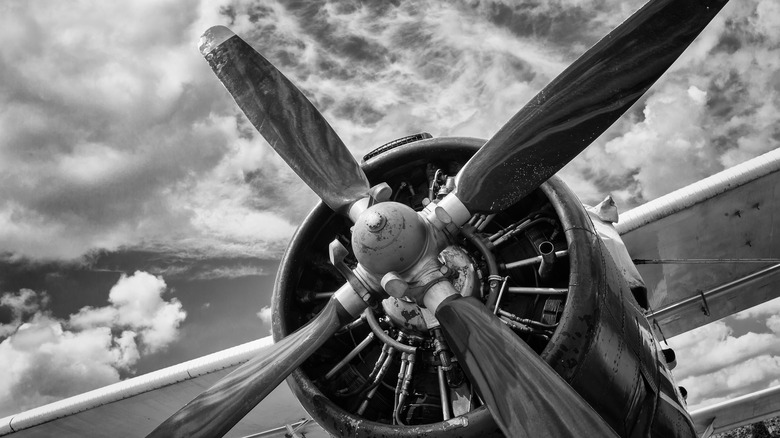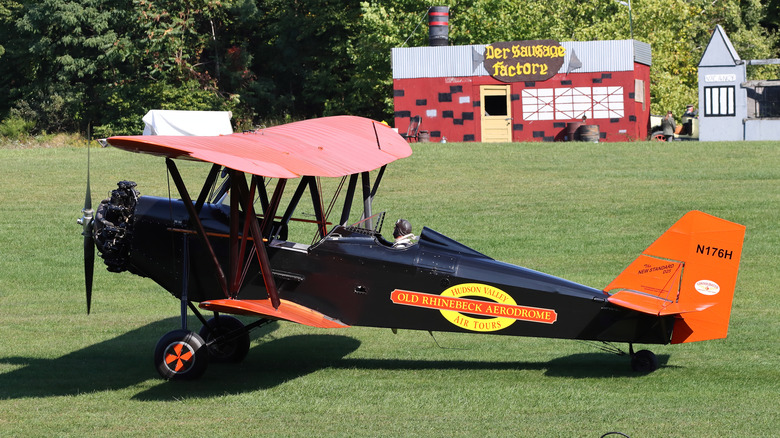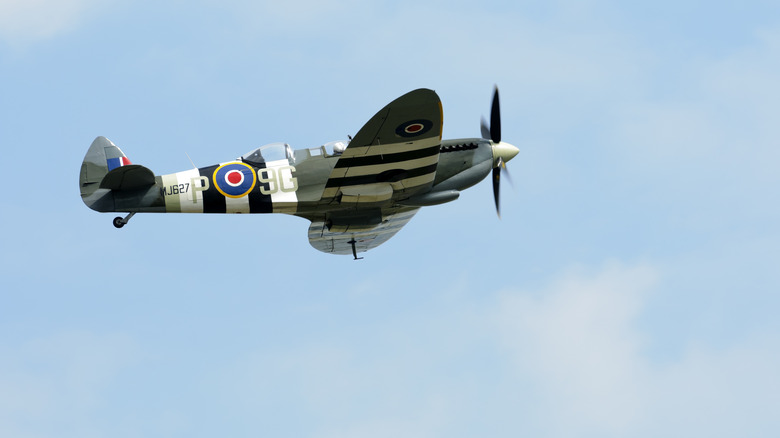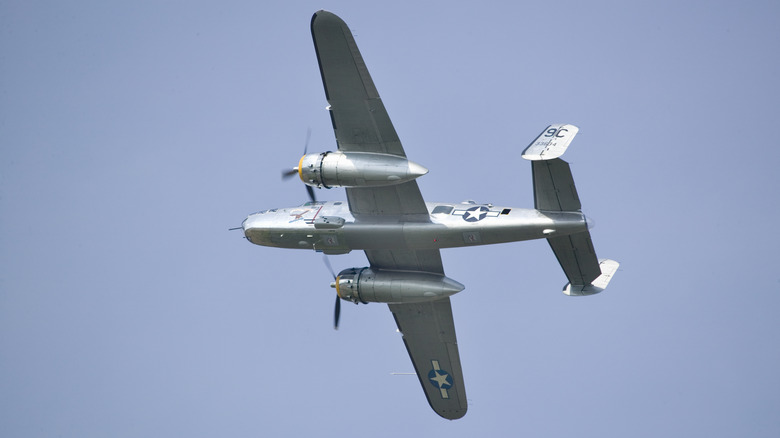3 Classic Airplanes That You Can Still Fly On Today
It's a bit difficult to get excited about the majesty of air travel when you're aimlessly flipping through the in-flight magazine on a 747. It feels like riding the bus with more security checks, and the only time we do get excited is for the wrong reasons when turbulence sets in. Perhaps nothing can take us back to the early thrill of flight like classic planes. Fortunately, there are many places that actually let you ride in them, and not just stare at them from the ground at an airshow.
Riding in a classic plane removes a bit of the comfortable buffer between being a passive passenger and the sky, letting you experience the excitement of what flight was like for previous generations. There are numerous museums and businesses around the world that have reinvigorated a few vintage planes, and will take you up for a spin, probably after listen to safety instructions.
Barnstorm with the 1929 New Standard D-25
Barnstorming isn't something many people get up to these days, but in the 1920s, it tended to involve stunt pilots travelling throughout the country, sometimes as part of circuses, performing tricks for audiences and selling rides on them. The New Standard D-25 was a popular for this very thing. Designed by Charles Day, it featured high-lift wings and a wider than usual landing gear that enabled it to hop out of small, rough fields, which is probably why the planes were also used for mail-carrying, crop dusting, and even for rum running, which led to a pair of them getting confiscated during Prohibition.
At the Old Rhinebeck Aerodrome in Dutchess County, New York, it's unlikely that you'll be doing any of those jobs, but they will let you toss on a pair of old-timey goggles and feel the wind directly in your face. The D-25 features 235 horsepower and reaches a top speed of 110 mph, and can hold up to four passengers, all of whom can tell people they went barnstorming.
Experience the victory roll in a Spitfire
Perhaps one of the most recognizable and best named planes from World War II, the innovative Supermarine Spitfire served in nearly every theater of the war and was Britain's most widely produced single-seat fighter aircraft. Designed by Reginald Mitchell, they were high-performance fighters that, in the beginning, featured a 1,000-horsepower Rolls-Royce Merlin engine, and reached a maximum speed of 360 miles per hour, with more than 20 different versions being produced over the course of the war. The armament ranged from machine guns to automatic cannons to fighter-bomber versions that could 250 and 500 pound bombs.
A few of those models, specifically the two-seater Supermarine Spitfires used for training, are available for rides at the aptly named flyaspitfire.com, located in England. They feature Spitfire T.9s, as well as p-51 Mustangs, and offer numerous flights across the British countryside (like over the White Cliffs of Dover and the Battle of Britain airfields), that includes the requisite pre-flight checks, an iconic Spitfire victory roll, and even the chance to fly the Spitfire for part of the flight under the guidance of the pilot. Obviously, it costs much more than your average domestic flight (starting at around £3k), but victory rolls don't come cheap.
Go raiding on a North American B-25 Mitchell
The North American B-25 Mitchell had a special role as a notable plane in the Battle of the Pacific during World War II, as they took part in the first strike against mainland Japan after Pearl Harbor. Under the command of Lieutenant Colonel James Doolittle, 16 B-25 Mitchells took off from the USS Hornet toward the shores of Tokyo for a bombing raid. Due to limitations in fuel in the high-pressure mission, many had to crash-land in China afterward instead of being able to return to the fleet. The bombs were successfully dropped over Tokyo, and though the damage was limited, it became a big victory for American morale following Pearl Harbor.
B-25s often featured a pair of 1,700 horsepower Wright engines, a few thousand pounds of bombs, and upwards of a dozen forward-facing machine guns, proving effective over the course of the war against ground forces and ships, among other targets. They'll tell you all about this and more at the Lonestar Flight Museum in Houston, probably while you're aboard the B-25 Mitchell. They even sometimes do walk-up flights in case you want to spontaneously spend your lunch break on a World War II plane.



